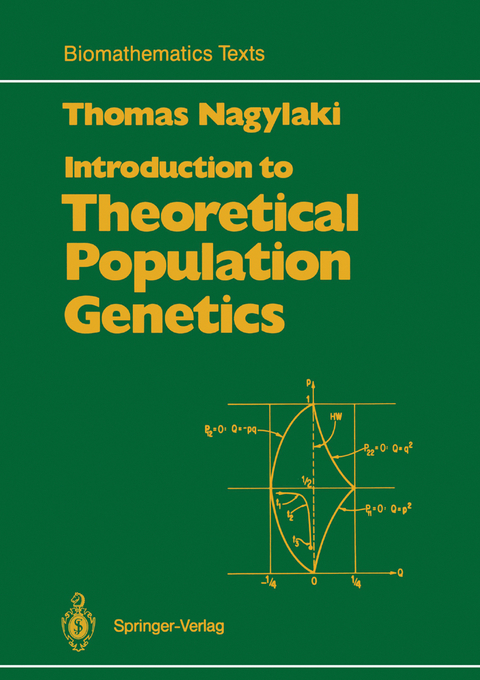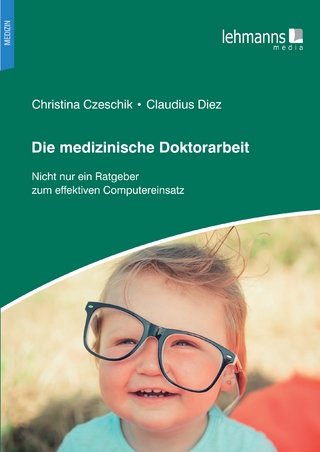
Introduction to Theoretical Population Genetics
Springer Berlin (Verlag)
978-3-642-76216-1 (ISBN)
1. Introduction.- 2. Asexual Haploid Populations.- 2.1 Selection.- 2.2 Mutation and Selection.- 2.3 Migration and Selection.- 2.4 Continuous Model with Overlapping Generations.- 2.5 Random Drift.- 2.6 Problems.- 3. Panmictic Populations.- 3.1 The Hardy-Weinberg Law.- 3.2 X-Linkage.- 3.3 Two Loci.- 3.4 Population Subdivision.- 3.5 Genotypic Frequencies in a Finite Population.- 3.6 Problems.- 4. Selection at an Autosomal Locus.- 4.1 Formulation for Multiple Alleles.- 4.2 Dynamics with Two Alleles.- 4.3 Dynamics with Multiple Alleles.- 4.4 Two Alleles with Inbreeding.- 4.5 Variable Environments.- 4.6 Intra-Family Selection.- 4.7 Maternal Inheritance.- 4.8 Meiotic Drive.- 4.9 Mutation and Selection.- 4.10 Continuous Model with Overlapping Generations.- 4.11 Density and Frequency Dependence.- 4.12 Problems.- 5. Nonrandom Mating.- 5.1 Selfing with Selection.- 5.2 Assortative Mating with Multiple Alleles and Distinguishable Genotypes.- 5.3 Assortative Mating with Two Alleles and Complete Dominance.- 5.4 Random Mating with Differential Fertility.- 5.5 Self-Incompatibility Alleles.- 5.6 Pollen and Zygote Elimination.- 5.7 Problems.- 6. Migration and Selection.- 6.1 The Island Model.- 6.2 General Analysis.- 6.3 The Levene Model.- 6.4 Two Diallelic Niches.- 6.5 Problems.- 7. X-Linkage.- 7.1 Formulation for Multiallelic Selection and Mutation.- 7.2 Selection with Two Alleles.- 7.3 Mutation-Selection Balance.- 7.4 Weak Selection.- 7.5 Problems.- 8. Two Loci.- 8.1 General Formulation for Multiple Loci.- 8.2 Analysis for Two Multiallelic Loci.- 8.3 Two Diallelic Loci.- 8.4 Continuous Model with Overlapping Generations.- 8.5 Problems.- 9. Inbreeding and Random Drift.- 9.1 The Inbreeding Coefficient.- 9.2 Calculation of the Inbreeding Coefficient from Pedigrees.- 9.3 Identity RelationsBetween Relatives.- 9.4 Phenotypic Effects of Inbreeding.- 9.5 Regular Systems of Inbreeding.- 9.6 Panmixia in Finite Populations.- 9.7 Heterozygosity under Mutation and Random Drift.- 9.8 The Inbreeding Effective Population Number.- 9.9 The Model for Random Drift of Gene Frequencies.- 9.10 Random Drift of Gene Frequencies.- 9.11 Gene-Frequency Change due to Mutation and Random Drift.- 9.12 The Island Model.- 9.13 The Variance Effective Population Number.- 9.14 Problems.- 10. Quantitative Genetics.- 10.1 The Decomposition of the Variance with Panmixia.- 10.2 The Correlation Between Relatives with Panmixia.- 10.3 The Change in Variance due to Assortative Mating.- 10.4 The Correlation Between Relatives with Assortative Mating.- 10.5 Selection.- 10.6 Mutation-Selection Balance.- 10.7 Problems.- References.- Author Index.
| Erscheint lt. Verlag | 6.12.2011 |
|---|---|
| Reihe/Serie | Biomathematics |
| Zusatzinfo | XII, 369 p. |
| Verlagsort | Berlin |
| Sprache | englisch |
| Maße | 170 x 242 mm |
| Gewicht | 661 g |
| Themenwelt | Informatik ► Weitere Themen ► Bioinformatik |
| Mathematik / Informatik ► Mathematik ► Angewandte Mathematik | |
| Naturwissenschaften ► Biologie | |
| Schlagworte | Algebra • biological • Breeding • Dynamics • Genetics • mathematical method • Migration • Mutation • Population • Population Genetics • Random genetic drift • selection |
| ISBN-10 | 3-642-76216-6 / 3642762166 |
| ISBN-13 | 978-3-642-76216-1 / 9783642762161 |
| Zustand | Neuware |
| Haben Sie eine Frage zum Produkt? |
aus dem Bereich


